-

-
Guangzhou Zhongzhu Machinery Co. LtdSand casting molding machine manufacturer
-
008615917377252 TEL:
-
E-mail: 470199755@qq.com

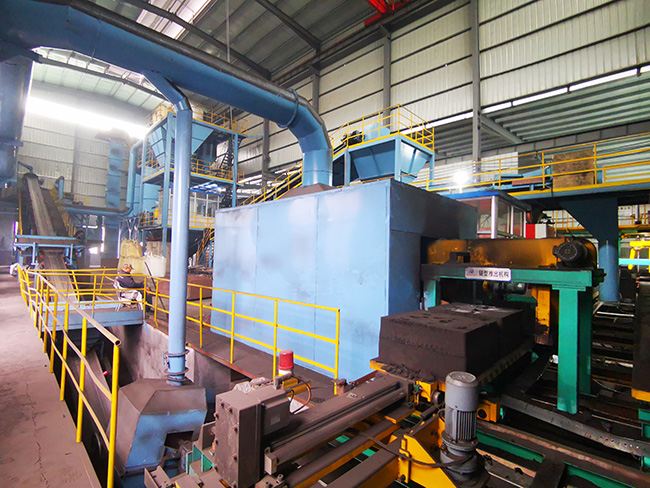
After the sand mold on the molding line is poured and cooled, the sand mold falls from the molding line and enters the vibrating shaker equipment. Through the vibration of the machine tool, the sand gradually breaks and falls onto the high-temperature resistant belt at the bottom, while the casting and larger iron blocks remain on the vibrating machine tool, achieving the separation of the casting and molding sand!
Usually, we install a vacuum hood above the vibrating sand shaker, which can absorb the dust generated during the process of sand mold falling and crushing, and also have a certain sound insulation effect!
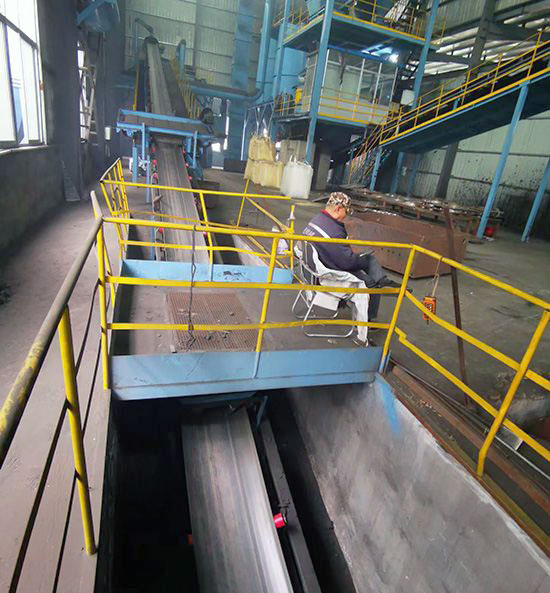
The sand blocks and loose sand separated from the casting after vibration are collectively referred to as old sand. We transport the old sand through a temperature resistant belt and climb it to a certain height for the next processing step. Before the old sand climbs up, we usually install a small crusher on the belt to powder the larger sand blocks for better transportation and climbing, During the belt conveying process, we will install high strength magnet adsorption equipment on the belt to adsorb small iron blocks and iron beans and avoid damaging the processing equipment in other links!
When the old sand is transported into a rolling screening equipment with a slope after climbing, the old sand will be separated out of larger impurities through the rolling of the screen, such as film coated sand cores and filter screens that have not been fully burned. At the same time, dust will be generated during the screening process, so we will connect the vacuum pipeline to the drum type screening equipment!
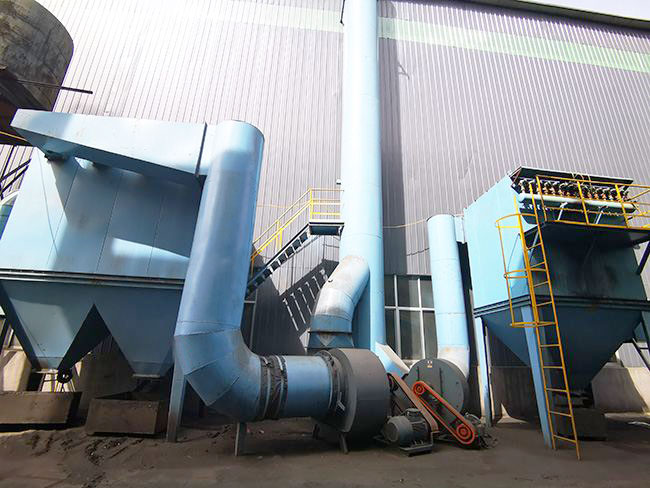
Boiling cooling machine tools are generally designed to be installed below the drum screening equipment. After passing through the screening, the old sand falls into a constantly vibrating and inclined fishnet shaped drilling design plane by gravity. During the continuous vibration process, the old sand slowly passes through the plane and finally falls into the bottom groove and enters the hopper elevator. During this process, a blower with sufficient wind power is installed at the bottom of the boiling cooling machine tool, continuously blowing the wind up from the bottom of the fish scale perforated design plane, reducing the temperature of the old sand to a certain extent. At the same time, the top of the equipment is also connected to the main dust suction pipeline, which timely extracts the gas entering the blower and the generated dust, and collects the dust through bag dust removal!
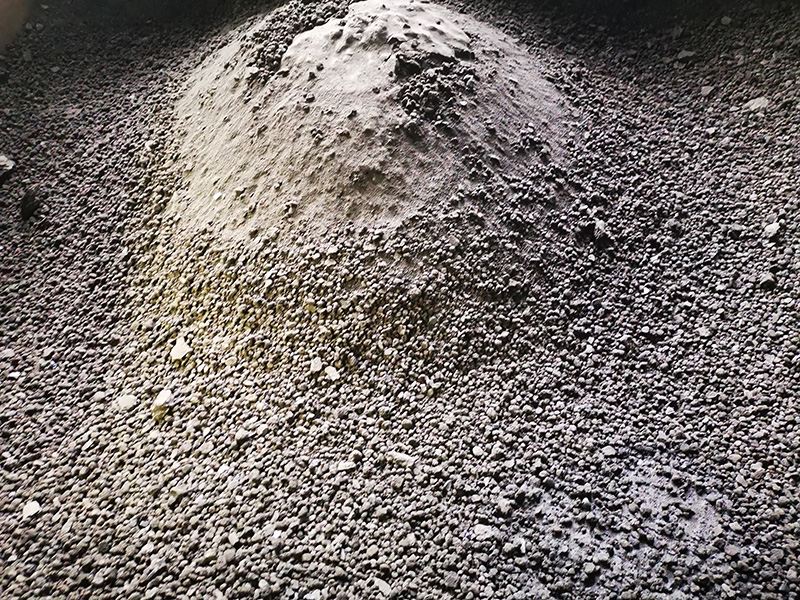
After dust removal and cooling, the old sand is transported to a certain height through a hopper type lifting device. The old sand is then placed in a more refined screening device, and the hardened particles in the old sand are screened and separated through continuous vibration and screening. The separated granular sand falls to the bottom through the pipeline and is collected in the waste hopper.
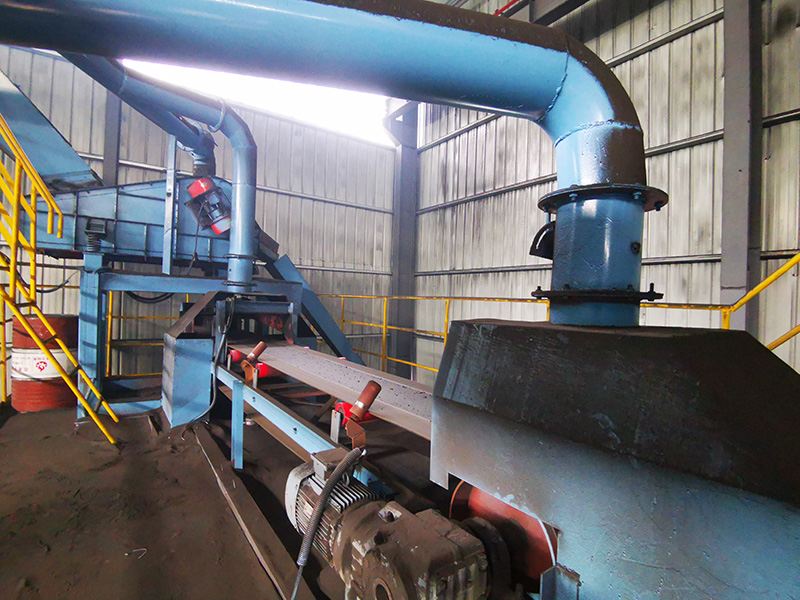
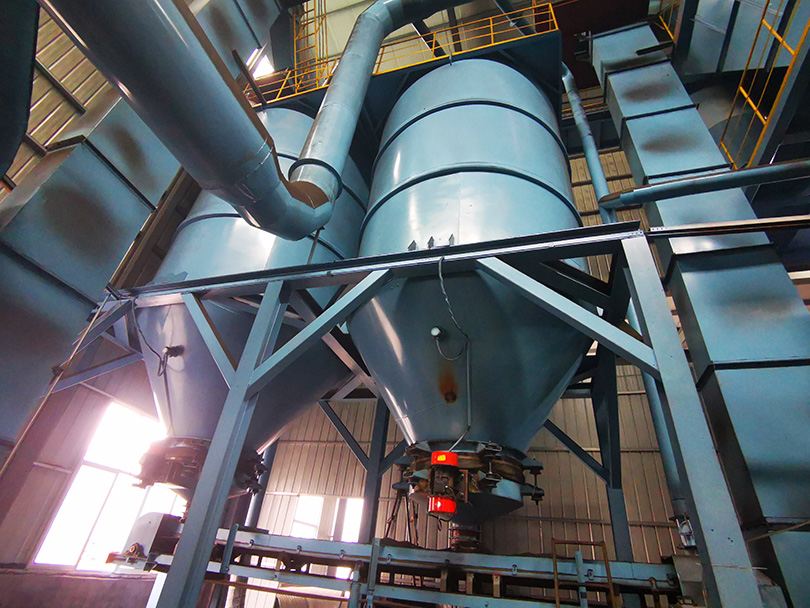
The screened old sand is stored separately in the sand bin through belt conveyor for further cooling and waiting for the next use. When sand is required for automatic molding, the unloading valve at the bottom of the sand bin is opened according to the actual situation. The sand falls onto the conveyor belt at the bottom of the sand bin by gravity and finally enters the hopper lifting equipment again, lifting the old sand to the top of the mixing unit.
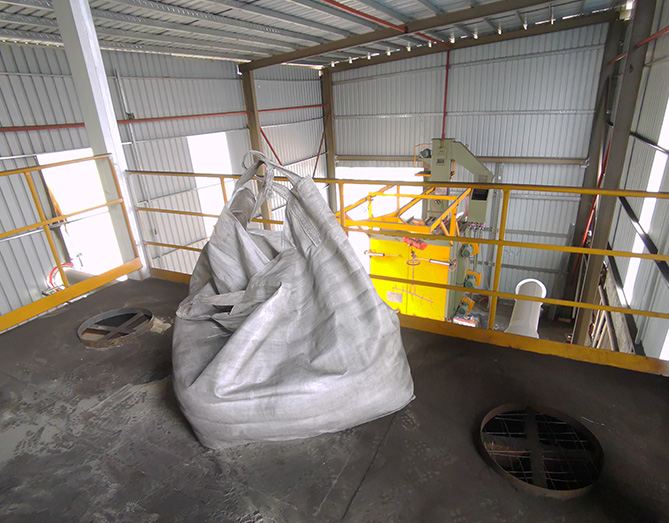
The sand mixing unit consists of a material warehouse, an old sand small sand warehouse, and a sand mixer, and is generally designed with a three-layer structure.
The top layer is the material inlet for adding casting materials (coal powder, bentonite) and old sand. The operator uses an electric crane to lift the casting materials to the feeding platform on the top layer and pour them into the material inlet. The old sand is connected to the hopper elevator at the bottom of the old sand silo, and the raised old sand also enters the small sand silo inlet of the old sand in the same way.
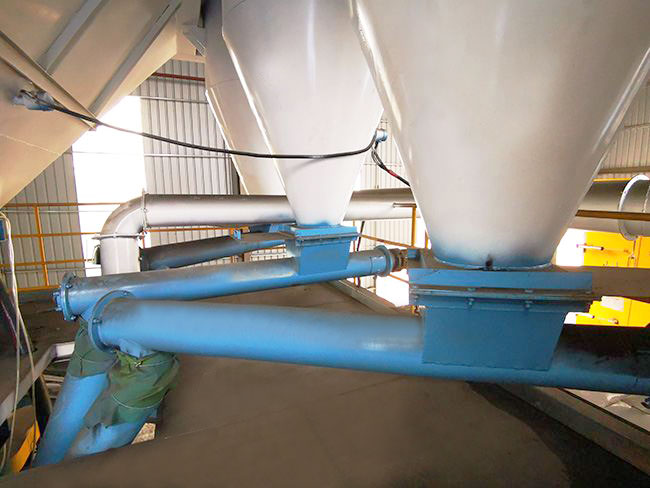

The bottom layer is the sand mixer equipment and the electrical control operation testing room; When the sand mixing unit is started, appropriate casting materials (coal powder, bentonite, new sand) and old sand are added to the sand mixer according to the parameters set by the electronic control program. During the sand mixing process, the sand mixer is also connected to the water inlet pipeline, and an appropriate amount of water is added to the sand mixer through timing and spraying. At the same time, the top of the sand mixer is also connected to a ventilation pipeline, which is conducive to the discharge of heat and internal pressure generated during the sand mixing process.
We will design and install the electric control room next to the sand mixer to facilitate operators to control and adjust the new casting sand obtained after mixing in a timely manner.
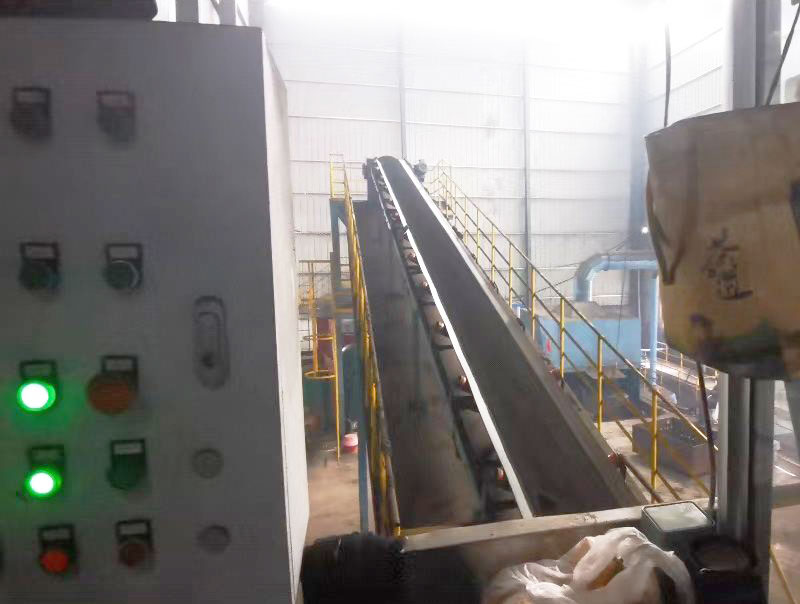
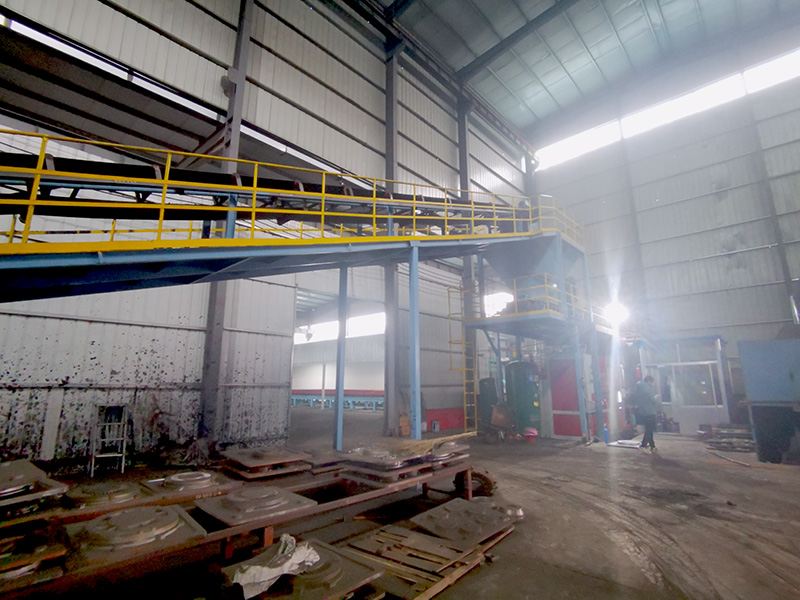
After mixing, the new casting sand will be released from the gate on the side of the sand mixer to the conveyor belt, and the new sand will be transported into a small sand bin of about 3-5 tons located at the top of the molding machine through the belt. The purpose is to reserve and store the new sand in advance for timely replenishment by the molding machine, avoiding delaying the normal operation of the molding machine.
A material level gauge is installed in both the sand shooting cylinder and the small sand bin of the molding machine to detect the storage capacity of sand. The bottom of the small sand bin is connected to the sand inlet of the molding machine by a belt.